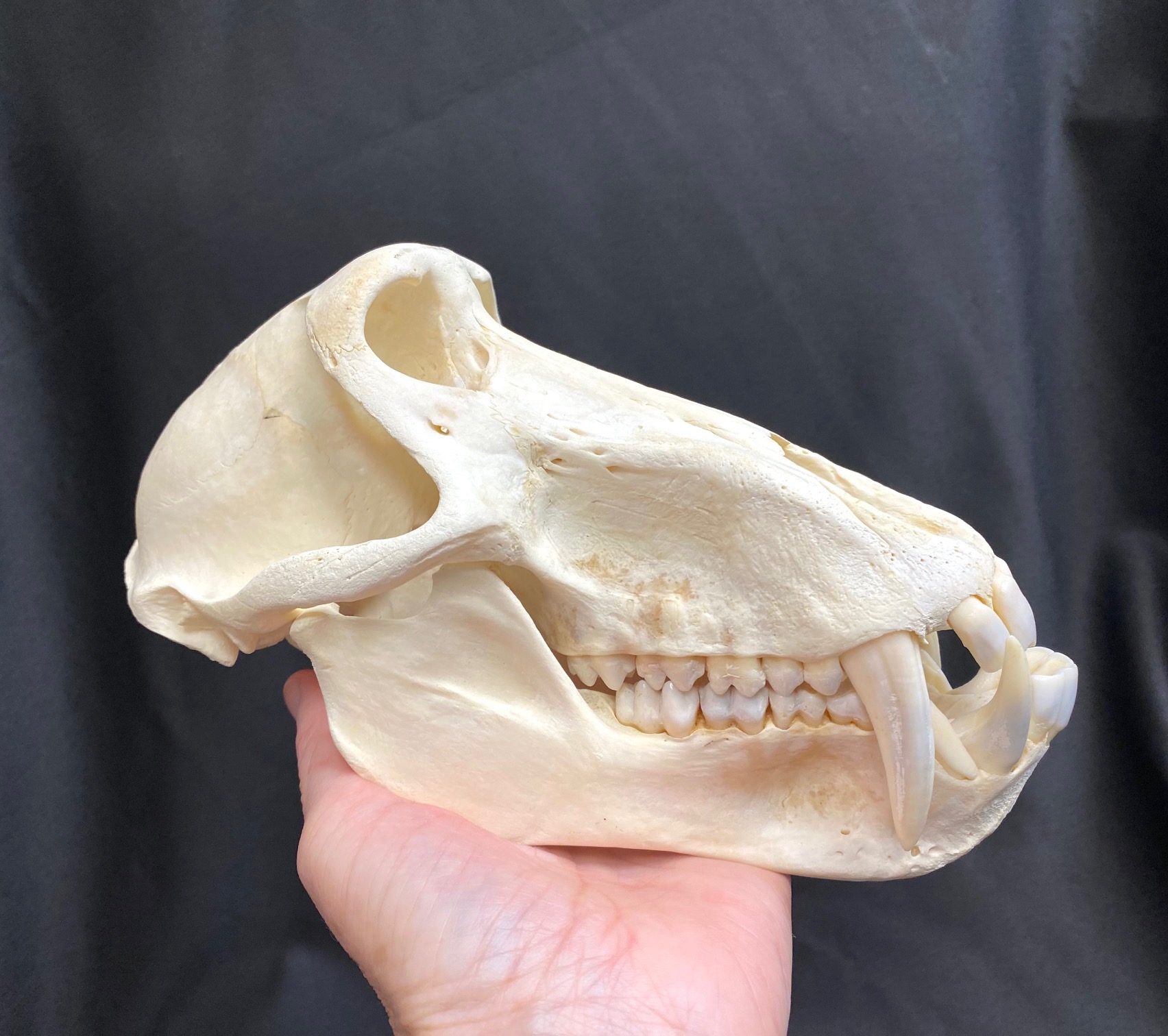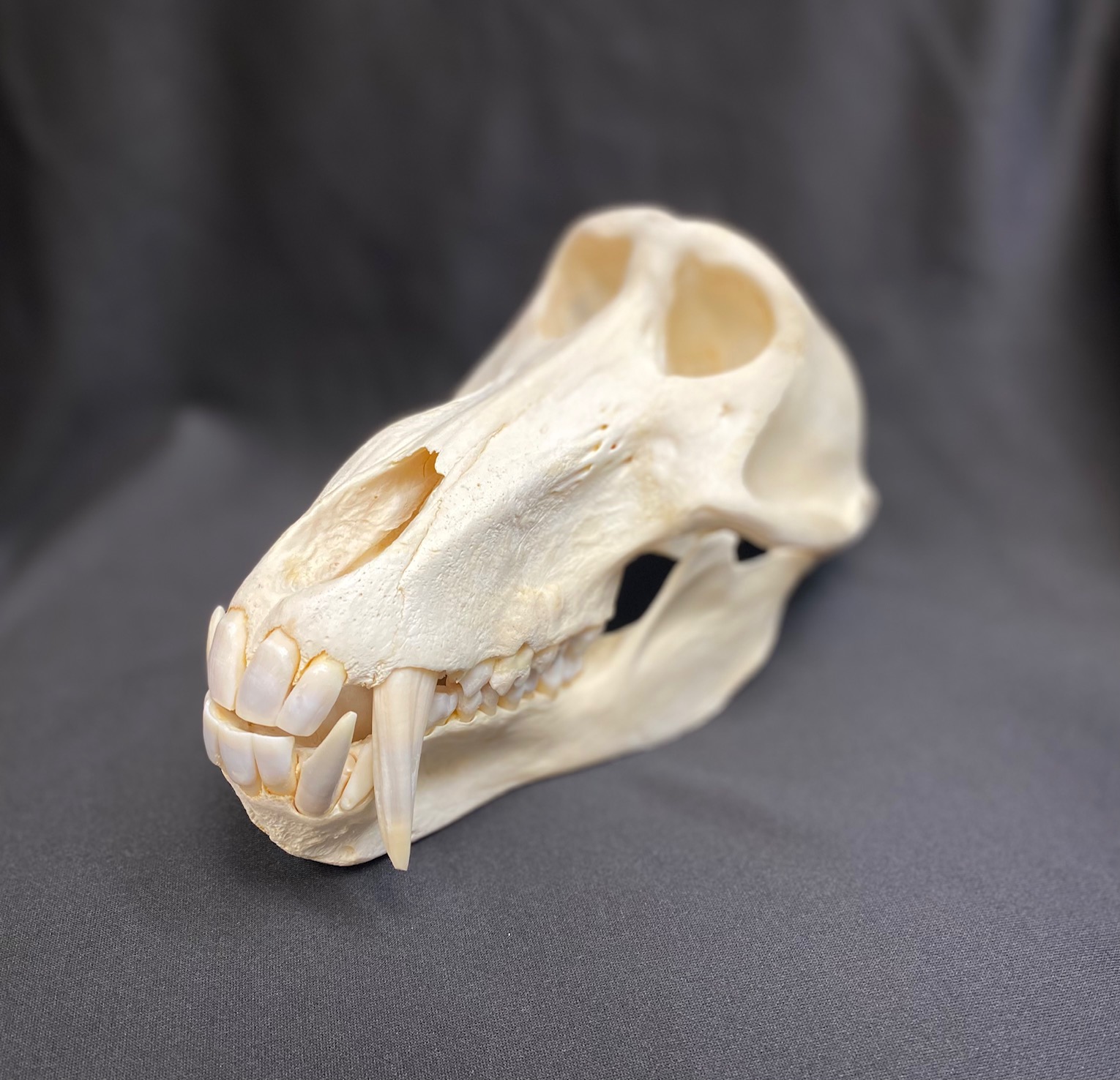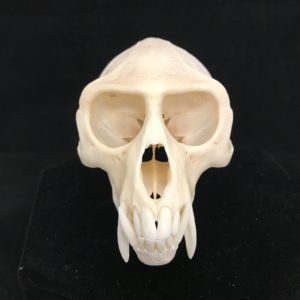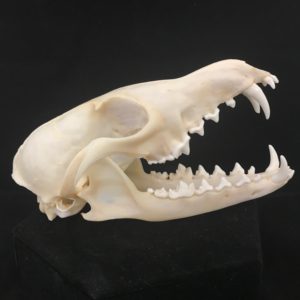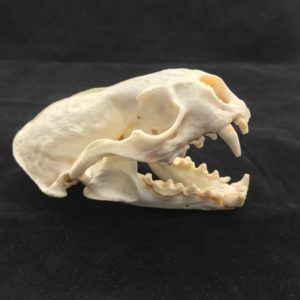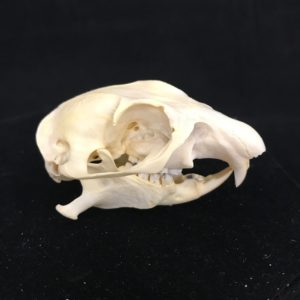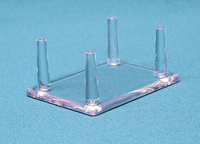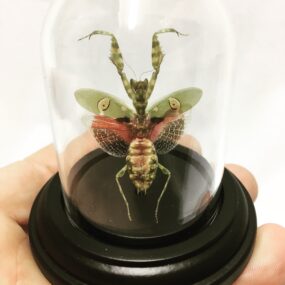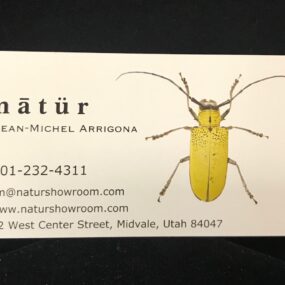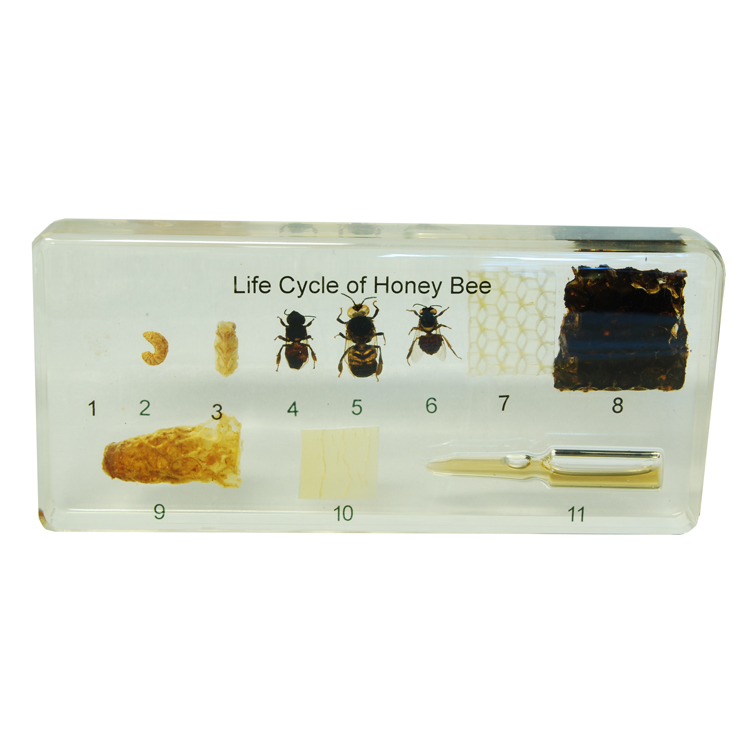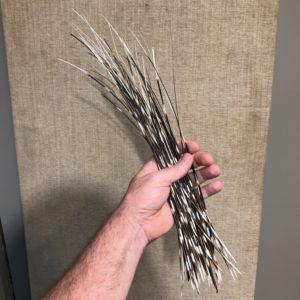Description
Male Chacma Baboon skull, real bone.
Very beautiful, male Chacma Baboon skull, with all teeth present and very large canines. This specimen is approximately 8 3/4 inches long, 4 3/4 inches at its widest point and 5 1/8 inches at its tallest point.
You will receive this exact specimen, or one like it. At your request, we are happy to send you photos of the exact specimen you will receive.
The chacma baboon (Papio ursinus), also known as the Cape baboon, is, like all other baboons, from the Old World monkey family. It is also one of the largest of all monkeys. Located primarily in Southern Africa, the chacma baboon has a wide variety of social behaviors, including a dominance hierarchy, collective foraging, adoption of young by females, and friendship pairings. These behaviors form parts of a complex evolutionary ecology. In general, the species is not threatened, but human population pressures have increased contact between humans and baboons. Hunting, trapping, and accidents kill or remove many baboons from the wild, thereby reducing baboon numbers and disrupting their social structure.
The chacma baboon usually lives in social groups, called troops, which are composed of multiple adult males, adult females, and their offspring. Occasionally, however, very small groups form that consist of only a single adult male and several adult females. Chacma troops are characterized by a dominance hierarchy. Female ranking within the troop is inherited through the mother and remains relatively fixed, while the male ranking is often in flux, especially when the dominant male is replaced. Chacmas are unusual among baboons in that neither males nor females form strong relationships with members of the same sex. Instead, the strongest social bonds are often between unrelated adult males and females.Infanticide is much more common among Chacmas compared to most other baboon species, as newly dominant males will often kill infants or young baboons sired by the previously dominant male. Baboon troops possess a complex group behavior and communicate by means of body attitudes, facial expressions, vocalizations and touch.
https://www.naturshowroom.com/shop/male-vervet-monkey-skull-real-bone/



